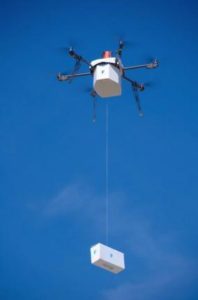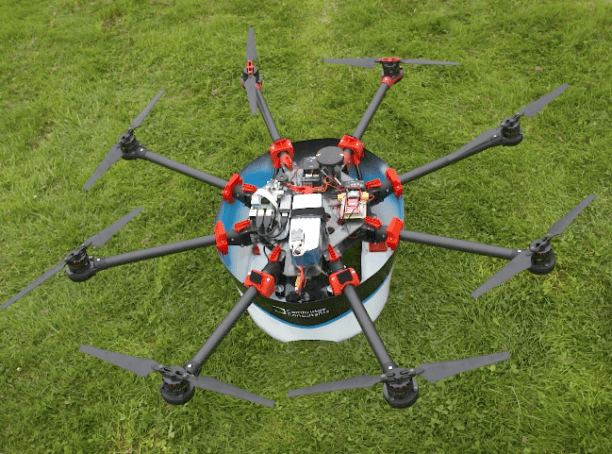
 A recent article in Forbes Magazine put together 11 predictions about drone delivery from their Forbes Technology Council. Here are 3 key takeaways about when and how drone delivery might actually come to your neighborhood.
A recent article in Forbes Magazine put together 11 predictions about drone delivery from their Forbes Technology Council. Here are 3 key takeaways about when and how drone delivery might actually come to your neighborhood.
1. Drones Will Supplement but Not Replace Truck Delivery
More than one of the Forbes Tech Council members riffed on the them that drones may augment but not replace other forms of delivery. “Issues such as safety, weather and privacy concerns will continue to be a challenge, and there will remain a need for traditional delivery options,” says Justin Morgenthau, Triax Technologies, Inc.
Tom Altman,
Leverage, powered by Clickstop, suggested that drones used in conjunction with trucks – think of the
design proposed by UPS – are realistic and provide value.
2. The Most Value of Drone Delivery May Come from the Last Mile
Jason Gill,
The HOTH points out that last mile drone delivery could be handled in an Uber-model fashion. “Long-haul drones are still far fetched, but using drones for last-mile deliveries is very real,” he says.
Sunil Ranka Ranka,
Predikly LLC points out that drone simply cannot reliably deliver long distances at this point in time, making last mile delivery the only realistic scenario. “With the current cost of charge and battery life, we will have to wait till drones could fly longer distance before scaling it,” says Ranka.
Anil Mathews,
Near says that last mile deliveries in rural areas where houses are spread further apart provides significant value for consumers and commerce.
3. The Barriers to Widespread Drone Delivery are Both Legal and Technological
Despite disagreement from the Council on this point, a full analysis of the viewpoints shows that regulation is not the only barrier to drone delivery.
Vikram Joshi,
pulsd says: “Now, it’s mostly about figuring out legalities. Getting lawmakers on board is going to be tricky, especially after all the recent privacy concerns about big companies. But we will get there. “
However, Ranka Ranka points out that drones can’t practically carry heavier packages long distances yet. And
John Sung Kim,
Fingrprint.io, reasonable points out that consumers are unlikely to put up with the noise: “Drone-only delivery is not likely until the hardware technology has a semi-quantum leap in noise reduction.”
As the legal aspects get worked out (drone delivery is currently limited by laws against flight beyond visual line of sight, in crowded areas and over people) the technology will need to keep up in order to make widescale or drone only delivery practical.
Miriam McNabb is the Editor-in-Chief of DRONELIFE and CEO of JobForDrones, a professional drone services marketplace, and a fascinated observer of the emerging drone industry and the regulatory environment for drones. Miriam has penned over 3,000 articles focused on the commercial drone space and is an international speaker and recognized figure in the industry. Miriam has a degree from the University of Chicago and over 20 years of experience in high tech sales and marketing for new technologies.
For drone industry consulting or writing, Email Miriam.
TWITTER:@spaldingbarker
Subscribe to DroneLife here.

